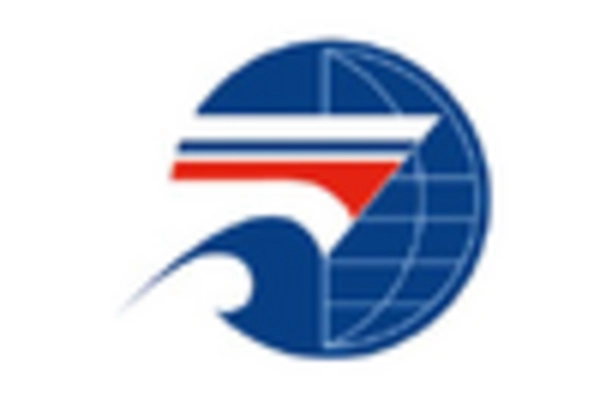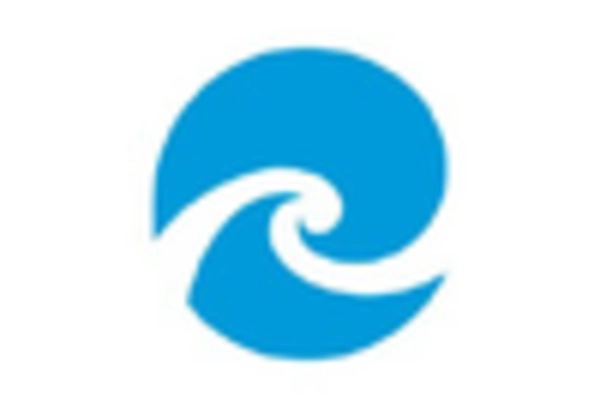-
Executive Summary
-
Scope of the Report
-
Market Definition
-
Scope of the Study
- Research Objectives
- Assumptions & Limitations
-
Market Structure
-
Impact of COVID-19 on the market
-
Impact on raw material procurement
-
Impact on production and manpower availability
-
Impact on supply chain and logistics
-
Impact on pricing
-
Impact on consumer buying decision
-
Market Research Methodology
-
Research Process
-
Secondary Research
-
Primary Research
-
Forecast Model
-
Market Landscape
-
Supply Chain Analysis
- Raw Material Suppliers
- Manufacturers/Applications
- Distributors/Retailers/Wholesalers/E-Commerce
- End Users
-
Porter’s Five Forces Analysis
- Threat of New Entrants
- Bargaining Power of Buyers
- Bargaining Power of Suppliers
- Threat of Substitutes
- Internal Rivalry
-
Market Dynamics of the Global Fishmeal Market
-
Introduction
-
Drivers
-
Restraints
-
Opportunities
-
Challenges
-
Global Fishmeal Market, by Source
-
Introduction
-
Salmon & Trout
- Market Estimates & Forecast, 2024-2032
- Market Estimates & Forecast, by Region, 2024-2032
-
Marine Fish
- Market Estimates & Forecast, 2024-2032
- Market Estimates & Forecast, by Region, 2024-2032
-
Crustaceans
- Market Estimates & Forecast, 2024-2032
- Market Estimates & Forecast, by Region, 2024-2032
-
Tilapia
- Market Estimates & Forecast, 2024-2032
- Market Estimates & Forecast, by Region, 2024-2032
-
Others
- Market Estimates & Forecast, 2024-2032
- Market Estimates & Forecast, by Region, 2024-2032
-
Global Fishmeal Market, by Livestock
-
Introduction
-
Ruminants
- Market Estimates & Forecast, 2024-2032
- Market Estimates & Forecast, by Region, 2024-2032
-
Poultry
- Market Estimates & Forecast, 2024-2032
- Market Estimates & Forecast, by Region, 2024-2032
-
Swine
- Market Estimates & Forecast, 2024-2032
- Market Estimates & Forecast, by Region, 2024-2032
-
Aquatic Animals
- Market Estimates & Forecast, 2024-2032
- Market Estimates & Forecast, by Region, 2024-2032
-
Others
- Market Estimates & Forecast, 2024-2032
- Market Estimates & Forecast, by Region, 2024-2032
-
Global Fishmeal Market, by Application
-
Introduction
-
Fertilizers
- Market Estimates & Forecast, 2024-2032
- Market Estimates & Forecast, by Region, 2024-2032
-
Animal Feed
- Market Estimates & Forecast, 2024-2032
- Market Estimates & Forecast, by Region, 2024-2032
-
Others
- Market Estimates & Forecast, 2024-2032
- Market Estimates & Forecast, by Region, 2024-2032
-
Global Fishmeal Market, by Region
-
Introduction
-
North America
- Market Estimates & Forecast, 2024-2032
- Market Estimates & Forecast, by Application, 2024-2032
- Market Estimates & Forecast, by Livestock, 2024-2032
- Market Estimates & Forecast, by Source, 2024-2032
- Market Estimates & Forecast, by Stage of Application, 2024-2032
- US
- Market Estimates & Forecast, by Stage of Application, 2024-2032
- Canada
- Mexico
-
Europe
- Market Estimates & Forecast, 2024-2032
- Market Estimates & Forecast, by Application, 2024-2032
- Market Estimates & Forecast, by Livestock, 2024-2032
- Market Estimates & Forecast, by Source, 2024-2032
- Market Estimates & Forecast, by Stage of Application, 2024-2032
- Germany
- France
- Italy
- Spain
- UK
- Rest of Europe
-
Asia-Pacific
- Market Estimates & Forecast, 20110–2024
- Market Estimates & Forecast, by Application, 2024-2032
- Market Estimates & Forecast, by Livestock, 2024-2032
- Market Estimates & Forecast, by Source, 2024-2032
- Market Estimates & Forecast, by Stage of Application, 2024-2032
- China
- India
- Japan
- Australia & New Zealand
- Rest of Asia-Pacific
-
Rest of the World (RoW)
- Market Estimates & Forecast, 2024-2032
- Market Estimates & Forecast, by Application, 20110–2024
- Market Estimates & Forecast, by Livestock, 2024-2032
- Market Estimates & Forecast, by Source, 2024-2032
- Market Estimates & Forecast, by Stage of Application, 2024-2032
- South America
- Middle East
- Africa
-
Company Landscape
-
Introduction
-
Market Key Strategies
-
Key Development Analysis
-
(Expansions/Mergers and Acquisitions/Joint Ventures/Product Developments/Agreements/Investments)
-
Company Profiles
-
FMC Corporation
- Company Overview
- Financial Updates
- Product/Business Segment Overview
- Key Strategies
- Key Developments
- SWOT Analysis
-
Austevoll Seafood ASA
- Company Overview
- Financial Updates
- Product/Business Segment Overview
- Key Strategies
- Key Developments
- SWOT Analysis
-
Croda International Plc.
- Company Overview
- Financial Updates
- Product/Business Segment Overview
- Key Strategies
- Key Developments
- SWOT Analysis
-
Oceana Group Limited
- Company Overview
- Financial Updates
- Product/Business Segment Overview
- Key Strategies
- Key Developments
- SWOT Analysis
-
Omega Protein Corporation
- Company Overview
- Financial Updates
- Product/Business Segment Overview
- Key Strategies
- Key Developments
- SWOT Analysis
-
Empresas Copec S.A.
- Company Overview
- Financial Updates
- Product/Business Segment Overview
- Key Strategies
- Key Developments
- SWOT Analysis
-
Biomega AS
- Company Overview
- Financial Updates
- Product/Business Segment Overview
- Key Strategies
- Key Developments
- SWOT Analysis
-
Pioneer Fishing (Pty) Ltd.
- Company Overview
- Financial Updates
- Product/Business Segment Overview
- Key Strategies
- Key Developments
- SWOT Analysis
-
Calysta, Inc.
- Company Overview
- Financial Updates
- Product/Business Segment Overview
- Key Strategies
- Key Developments
- SWOT Analysis
-
The Scoular Company
- Company Overview
- Financial Updates
- Product/Business Segment Overview
- Key Strategies
- Key Developments
- SWOT Analysis
-
Aker Biomarine Antarctic AS
- Company Overview
- Financial Updates
- Product/Business Segment Overview
- Key Strategies
- Key Developments
- SWOT Analysis
-
Sarma Fish S.A.R.L
- Company Overview
- Financial Updates
- Product/Business Segment Overview
- Key Strategies
- Key Developments
- SWOT Analysis
-
Animalfeeds International Corporation
- Company Overview
- Financial Updates
- Product/Business Segment Overview
- Key Strategies
- Key Developments
- SWOT Analysis
-
Alpha Atlantique
- Company Overview
- Financial Updates
- Product/Business Segment Overview
- Key Strategies
- Key Developments
- SWOT Analysis
-
Novus International Inc.
- Company Overview
- Financial Updates
- Product/Business Segment Overview
- Key Strategies
- Key Developments
- SWOT Analysis
-
Conclusion
-
LIST OF TABLES
-
Global Fishmeal Market, by Region, 2024-2032 (USD Million)
-
Global Fishmeal Market, by Application, 2024-2032 (USD Million)
-
Global Fishmeal Market, by Livestock, 2024-2032 (USD Million)
-
Global Fishmeal Market, by Source, 2024-2032 (USD Million)
-
North America: Fishmeal Market, by Country, 2024-2032 (USD Million)
-
North America: Fishmeal Market, by Application, 2024-2032 (USD Million)
-
North America: Fishmeal Market, by Livestock, 2024-2032 (USD Million)
-
North America: Fishmeal Market, by Source, 2024-2032 (USD Million)
-
US: Fishmeal Market, by Application, 2024-2032 (USD Million)
-
US: Fishmeal Market, by Livestock, 2024-2032 (USD Million)
-
US: Fishmeal Market, by Source, 2024-2032 (USD Million)
-
Canada: Fishmeal Market, by Application, 2024-2032 (USD Million)
-
Canada: Fishmeal Market, by Livestock, 2024-2032 (USD Million)
-
Canada: Fishmeal Market, by Source, 2024-2032 (USD Million)
-
Mexico: Fishmeal Market, by Application, 2024-2032 (USD Million)
-
Mexico: Fishmeal Market, by Livestock, 2024-2032 (USD Million)
-
Mexico: Fishmeal Market, by Source, 2024-2032 (USD Million)
-
Europe: Fishmeal Market, by Country, 2024-2032 (USD Million)
-
Europe: Fishmeal Market, by Application, 2024-2032 (USD Million)
-
Europe: Fishmeal Market, by Livestock, 2024-2032 (USD Million)
-
Europe: Fishmeal Market, by Source, 2024-2032 (USD Million)
-
Germany: Fishmeal Market, by Application, 2024-2032 (USD Million)
-
Germany: Fishmeal Market, by Livestock, 2024-2032 (USD Million)
-
Germany: Fishmeal Market, by Source, 2024-2032 (USD Million)
-
France: Fishmeal Market, by Application, 2024-2032 (USD Million)
-
France: Fishmeal Market, by Livestock, 2024-2032 (USD Million)
-
France: Fishmeal Market, by Source, 2024-2032 (USD Million)
-
Italy: Fishmeal Market, by Application, 2024-2032 (USD Million)
-
Italy: Fishmeal Market, by Livestock, 2024-2032 (USD Million)
-
Italy: Fishmeal Market, by Source, 2024-2032 (USD Million)
-
Spain: Fishmeal Market, by Application, 2024-2032 (USD Million)
-
Spain: Fishmeal Market, by Livestock, 2024-2032 (USD Million)
-
Spain: Fishmeal Market, by Source, 2024-2032 (USD Million)
-
UK: Fishmeal Market, by Application, 2024-2032 (USD Million)
-
UK: Fishmeal Market, by Livestock, 2024-2032 (USD Million)
-
UK: Fishmeal Market, by Source, 2024-2032 (USD Million)
-
Rest of Europe: Fishmeal Market, by Application, 2024-2032 (USD Million)
-
Rest of Europe: Fishmeal Market, by Livestock, 2024-2032 (USD Million)
-
Rest of Europe: Fishmeal Market, by Source, 2024-2032 (USD Million)
-
Asia-Pacific: Fishmeal Market, by Country, 2024-2032 (USD Million)
-
Asia-Pacific: Fishmeal Market, by Application, 2024-2032 (USD Million)
-
Asia-Pacific: Fishmeal Market, by Livestock, 2024-2032 (USD Million)
-
Asia-Pacific: Fishmeal Market, by Source, 2024-2032 (USD Million)
-
China: Fishmeal Market, by Application, 2024-2032 (USD Million)
-
China: Fishmeal Market, by Livestock, 2024-2032 (USD Million)
-
China: Fishmeal Market, by Source, 2024-2032 (USD Million)
-
India: Fishmeal Market, by Application, 2024-2032 (USD Million)
-
India: Fishmeal Market, by Livestock, 2024-2032 (USD Million)
-
India: Fishmeal Market, by Source, 2024-2032 (USD Million)
-
Japan: Fishmeal Market, by Application, 2024-2032 (USD Million)
-
Japan: Fishmeal Market, by Livestock, 2024-2032 (USD Million)
-
Japan: Fishmeal Market, by Source, 2024-2032 (USD Million)
-
Rest of Asia-Pacific: Fishmeal Market, by Application, 2024-2032 (USD Million)
-
Rest of Asia-Pacific: Fishmeal Market, by Livestock, 2024-2032 (USD Million)
-
Rest of Asia-Pacific: Fishmeal Market, by Source, 2024-2032 (USD Million)
-
Rest of the World (RoW): Fishmeal Market, by Country, 2024-2032 (USD Million)
-
Rest of the World (RoW): Fishmeal Market, by Application, 2024-2032 (USD Million)
-
Rest of the World (RoW): Fishmeal Market, by Livestock, 2024-2032 (USD Million)
-
Rest of the World (RoW): Fishmeal Market, by Source, 2024-2032 (USD Million)
-
South America: Fishmeal Market, by Application, 2024-2032 (USD Million)
-
South America: Fishmeal Market, by Livestock, 2024-2032 (USD Million)
-
South America: Fishmeal Market, by Source, 2024-2032 (USD Million)
-
Middle East: Fishmeal Market, by Application, 2024-2032 (USD Million)
-
Middle East: Fishmeal Market, by Livestock, 2024-2032 (USD Million)
-
Middle East: Fishmeal Market, by Source, 2024-2032 (USD Million)
-
Africa: Fishmeal Market, by Application, 2024-2032 (USD Million)
-
Africa: Fishmeal Market, by Livestock, 2024-2032 (USD Million)
-
Africa: Fishmeal Market, by Source, 2024-2032 (USD Million)
-
LIST OF FIGURES
-
Global Fishmeal Market Segmentation
-
Forecast Research Methodology
-
Porter’s Five Forces Analysis of the Global Fishmeal Market
-
Value Chain of the Global Fishmeal Market
-
Share of the Global Fishmeal Market in 2022, by Country (%)
-
Global Fishmeal Market, by Region, 2024-2032
-
Global Fishmeal Market Size, by Application, 2022
-
Share of the Global Fishmeal Market, by Application, 2024-2032 (%)
-
Global Fishmeal Market Size, by Livestock, 2022
-
Share of the Global Fishmeal Market, by Livestock, 2024-2032 (%)
-
Global Fishmeal Market Size, by Source, 2022
-
Share of the Global Fishmeal Market, by Source, 2024-2032 (%)
-
"

















Leave a Comment